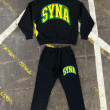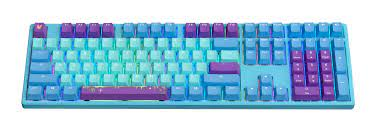Introduction: Custom Mechanical Keyboards
Custom mechanical keyboards have taken the world by storm, offering a unique typing experience that is customizable to your preferences. If you’re tired of the mushy feel of traditional membrane keyboards or looking to elevate your typing game, it’s time to dive into the world of custom mechanical keyboards. In this guide, we’ll walk you through everything you need to know as a beginner to build and enjoy your very own personalized keyboard nirvana.
-
What are Custom Mechanical Keyboards?
Before we delve into the world of custom mechanical keyboards, let’s first understand what they are. Unlike standard membrane keyboards, custom mechanical keyboards use individual mechanical switches for each key. These switches offer a satisfying tactile feel, audible click, and consistent actuation force, making typing a truly enjoyable experience.
Custom mechanical keyboards go beyond the standard pre-built options. Enthusiasts and hobbyists can handpick each component, from the switches and keycaps to the case and PCB (printed circuit board). This level of customization allows you to craft a keyboard that perfectly matches your typing style and aesthetic preferences.

-
Why Choose Custom Mechanical Keyboards?
You might be wondering why you should invest in a custom mechanical keyboard when there are numerous off-the-shelf options available. Well, the answer lies in the unparalleled benefits that custom mechanical keyboards offer.
Superior Typing Experience
Typing on a custom mechanical keyboard feels like poetry in motion. The tactile feedback and distinct keystrokes not only improve typing speed but also reduce finger fatigue. You’ll find yourself making fewer typing errors and experiencing a more satisfying typing rhythm.
Endless Customization Options
With custom mechanical keyboards, you are the designer. From the type of switches (such as Cherry MX, Gateron, or Kailh) to the keycap material (PBT, ABS, or artisanal), you have complete control over the look and feel of your keyboard. You can even add custom keycap designs to add a personal touch.
Durability and Longevity
Mechanical switches are known for their durability, often lasting for tens of millions of keystrokes. This longevity ensures that your custom keyboard will remain reliable and functional for years to come, making it a wise long-term investment.
-
Building Your Dream Custom Mechanical Keyboard
Building a custom mechanical keyboard may seem daunting, but with the right approach, it can be a fun and rewarding experience. Here’s a step-by-step guide to help you build your dream custom keyboard:
Define Your Requirements
Start by determining your requirements and preferences. Do you want a keyboard primarily for typing or gaming? What switch type appeals to you: tactile, linear, or clicky? Consider factors like key layout, size, and any additional features you want, such as RGB lighting.
Selecting the Right Switches
The switches are the heart of your custom mechanical keyboard. Research different switch types and try out a few before making a decision. Remember, the switch you choose will significantly impact your typing experience.
Choosing the Perfect Keycaps
Keycaps not only affect the aesthetics of your keyboard but also the feel of each keystroke. Decide on the material, profile, and design of the keycaps that align with your preferences.
Picking a Sturdy Case
The case provides the structural integrity and aesthetics of your custom keyboard. Opt for a high-quality case material like aluminum or stainless steel, and ensure it accommodates your chosen layout and switch type.
Assembling the Keyboard
Assembling your custom mechanical keyboard can be a thrilling experience. Follow the manufacturer’s guidelines and take your time to ensure each component fits perfectly. Test the keyboard before finalizing the build.
-
Tips for Maintaining and Upgrading Your Custom Keyboard
Congratulations, you’ve built your custom mechanical keyboard! To ensure it serves you well for years to come, follow these maintenance tips:
Regular Cleaning
Dust and debris can affect the performance of your keyboard. Regularly clean the keycaps and switches using a keycap puller and compressed air.
Lubrication
If you notice any switch stiffness or scratchiness, consider lubricating the switches. Proper lubrication can improve the smoothness and feel of the keystrokes.
Keycap Rotation
To avoid excessive wear on frequently used keys, consider rotating keycaps occasionally. This simple step can extend the lifespan of your keycaps.
Upgrading and Personalizing
Custom mechanical keyboards are all about flexibility. Feel free to upgrade components or swap out keycaps to give your keyboard a fresh look or try different switch types.
Conclusion
Congratulations on completing your journey to keyboard nirvana! You’ve learned the ins and outs of custom mechanical keyboards, from understanding their benefits to building your very own personalized keyboard. Embrace the joys of typing on a keyboard that matches your style and enhances your productivity. Happy typing!












